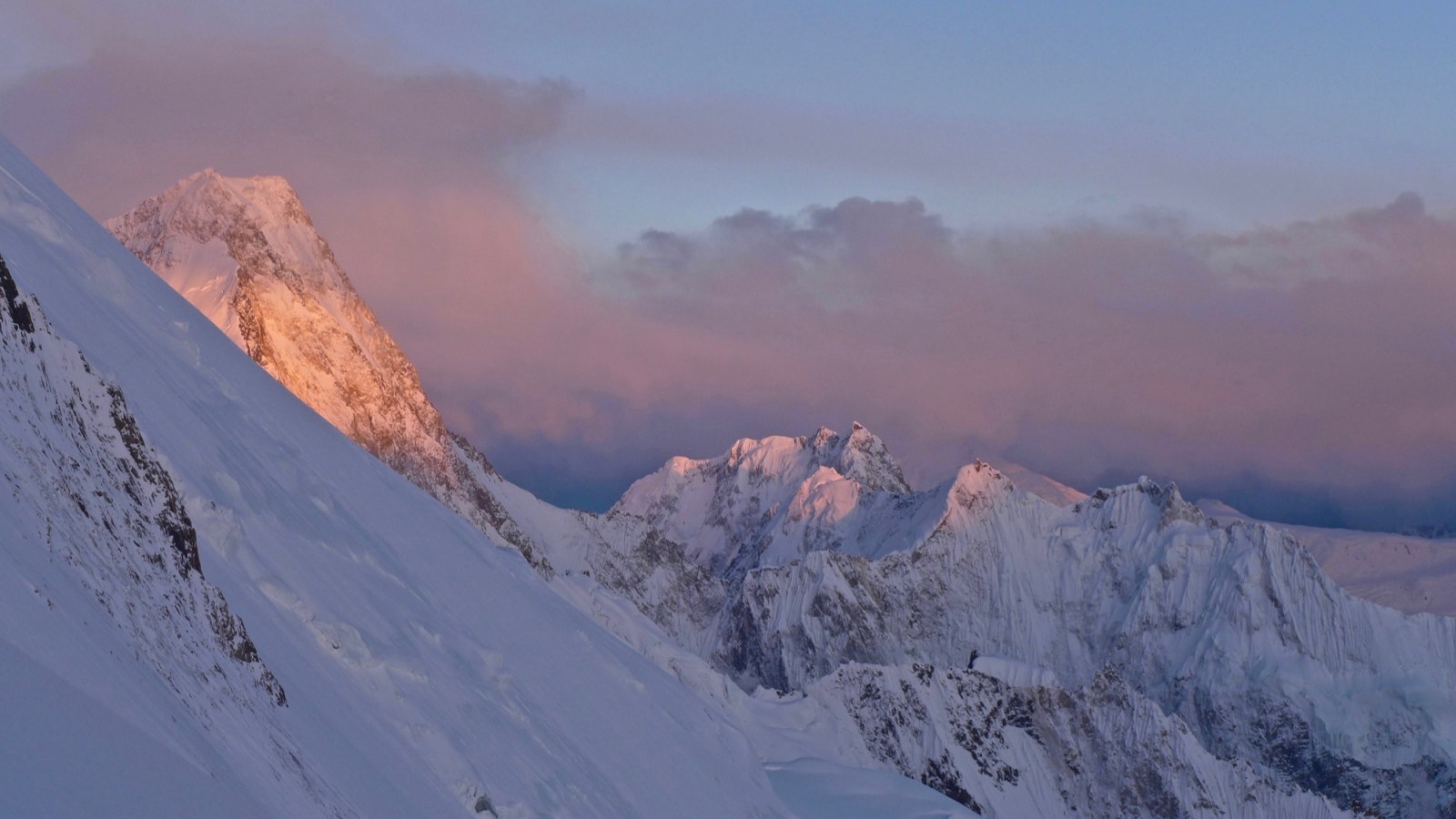Finding peace in a busy Patagonia
Towards the end of February 2020 Slovenian mountaineers Luka Krajnc and Luka Lindič established a difficult new climb up the south face of Aguja Saint-Exupéry in Patagonia’s Fitz Roy massif. This starts up a 1994 attempt the Argentines Marcelo Galghera and Horacio Gratton and climbs 500m of new terrain with difficulties up to 6c/A3 before following Petit Prince to the summit. The two, who in the past have climbed many of the hardest in the Alps together, succeeded on their second attempt and with two bivies.

The conditions for our plan A in this season never developed good enough so we started looking for a plan B. Steep, relatively safe and wind sheltered south face of Aguja Saint-Exupery seemed like a smart project and an attempt we found in the guidebook looked promising. We decided to check it out and immediately liked the wall and its quiet ambiance.
First attempt went well despite relatively cold temperatures and lots of ice in the cracks. We climbed first six pitches and found a few bolts from the first attempt party and then continued for another three to find a perfect bivy spot at the base of an obvious corner. Same day we climbed and fixed two more pitches for a faster start the next day. In the following morning we quickly jummared up our rope and started climbing a long and steep traverse into the big overhangs. The weather was perfect but we reached the point where we didn't want to commit to the terrain above us. We only had a single climbing rope, a 5mm tag line and few pitons left. The line looked possible with some luck with the features but not a guarantee. because of a long overhanging traverse ahead, we decided that the retreat would be too risky if we continue with the gear we had and turned around. We didn't think of trying the route again at that time and carried everything back to town.
Back in El Chalten the route didn't give us peace in our minds and we started thinking of trying again. we began collecting gear from others as we didn't bring enough with us from home. Rolando Garibotti and Thomas Huber generously borrowed us all that we missed and we were ready for the second round. Bringing more gear was the only change in tactics. This included one extra rope to fix in the overhanging traverse dihedral until we would see if we can get through. In case it would not work out, we could descent easier using the fixed rope to pull us to the wall in the overhanging terrain.
Because of a lot of snowy precipitation before the good weather we encountered more snow on the first pitches and ice in the cracks. Because we already knew the climbing, we still reached our high point relatively fast on our first day and climbed even one more pitch. Using same tactics with fixing ropes and returning to the comfortable bivy spot after pitch 9 as on the previous try.
Because of new snow and a lot of wet sections we didn’t focus on free climbing. Knowing that the crux of the route is still ahead of us, we decided to climb as efficient and safe as possible. But the route follows crack systems, most of which we believe would be free climbable in drier conditions. Also the overhanging part offered amazing passages which would probably go free at probably no harder than 8a. After we joined the Petit Prince route, there is a short overhanging A2 corner that we are not sure if it would go free, but we are also aware that once you start aiding, the perspective changes and it’s hard to switch back to the free climbing mindset. So maybe someone else will discover just that and remove the question mark from the free climbing vision.
We named our route Mir which means peace in Slovenian language. There are two main reasons for this name. Firstly because it didn't give us a peace of mind after the first attempt. We sensed that there might be a passage, but both agreed we weren't prepared to accept the risk of committing with the gear we had. Going up for the second attempt, we knew that nothing is guaranteed and we might end up going home without a single climb, but we both agreed that it offers us the right drive to give it our best as we knew we’ll enjoy the experience no matter the result.
Secondly we saw there were a lot of people trying the same routes or faces, which is not the experience we wanted to have, as being alone on a wild terrain is still the best and most pristine sensation that we seek in the mountains.